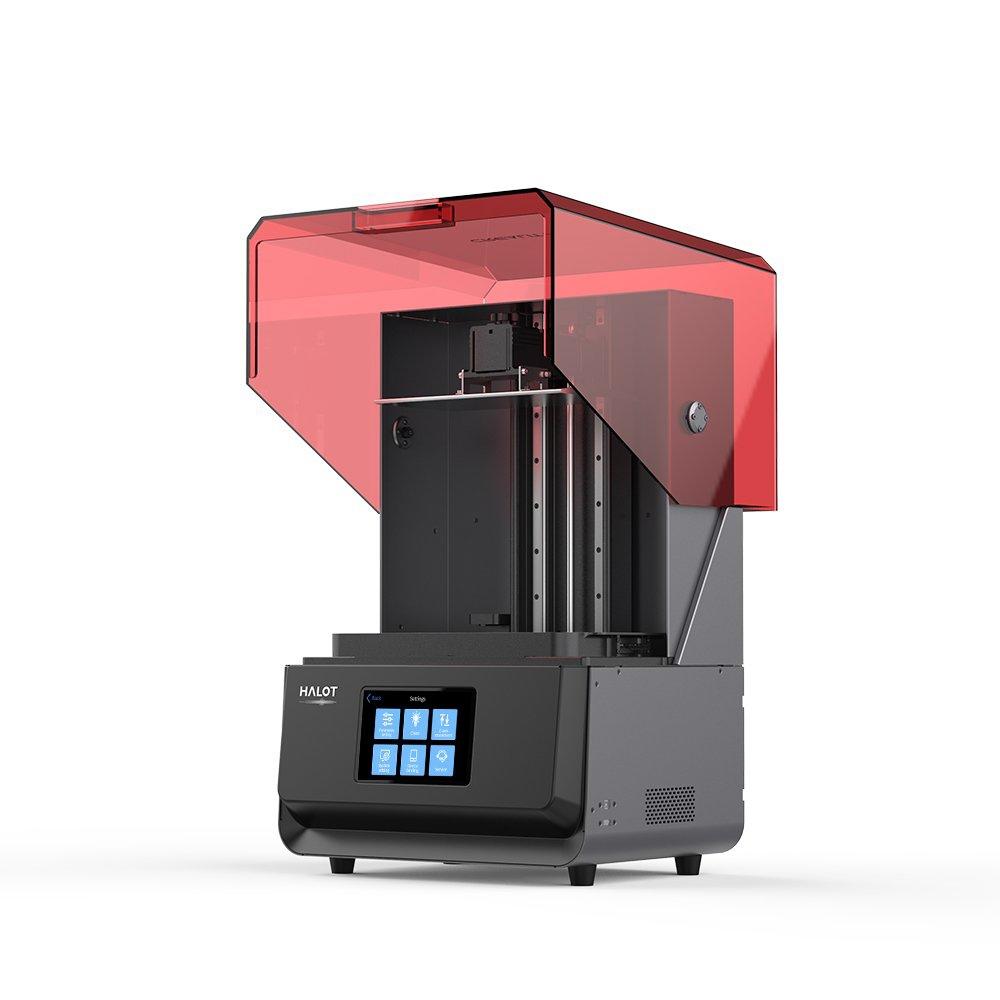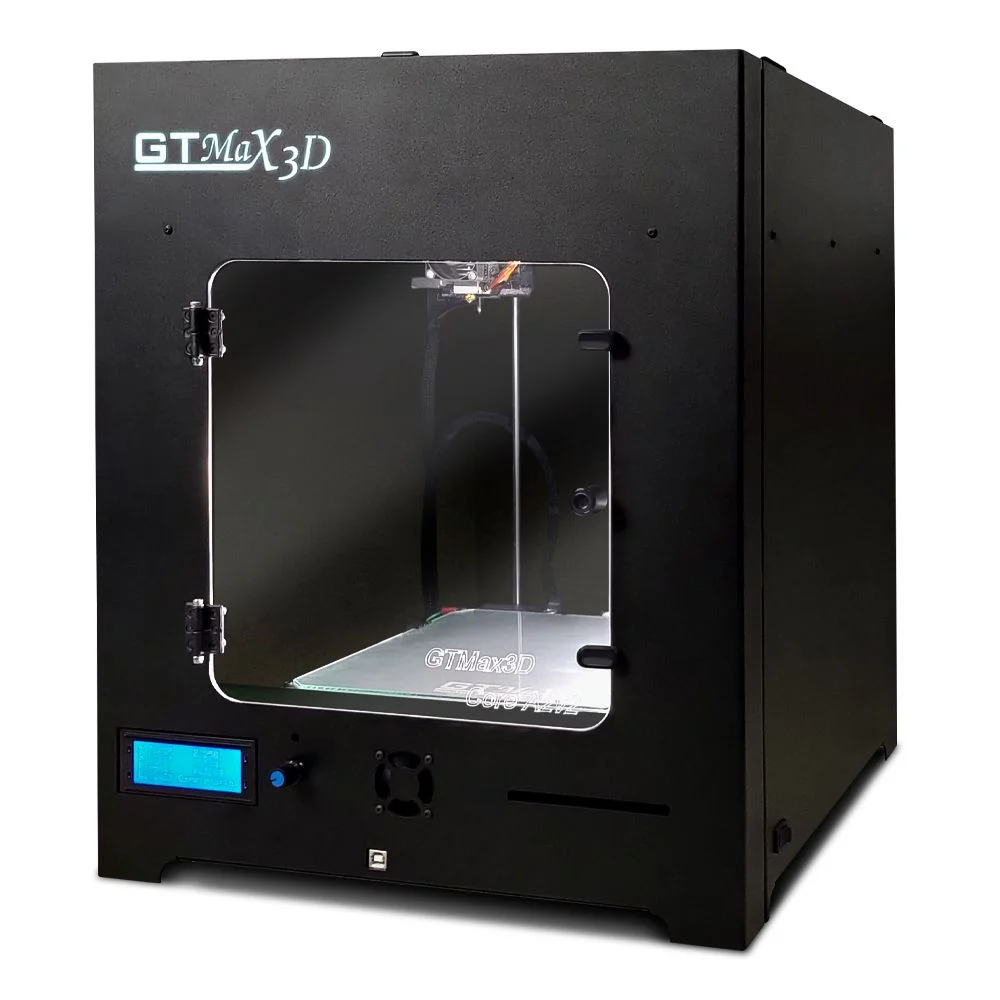Compare Halot Max vs Core A2V2
Comparison between the best 3D printers
Choose the best 3D printer at the best price. The cheapest 3D printers are here.
Buy a 3D printer here with 3D Fila.
 |
 |
|
| Model | Halot Max[BUY Halot Max] |
Core A2V2 |
| Printing Material | Resin | Filament |
| Buy Resin for Creality 3D Halot Max | Buy Filament forGTMax Core A2V2 | |
| Estimated price | $3000,00 | $684,00 |
| Manufacturer | Creality 3D | GTMax |
| Release Year | 2021 | 2019 |
| Print Volume [mm] | 293x165x300 | 220x220x240 |
| Printer Size [mm] | 480x387x770 | 425x460x512 |
| Weight [kg] | 32,5 | |
| Power Loss Recovery | NO | YES |
| Maximum Resolution [mm] | 0,03 | 0,05 |
| Processor | ||
| Display | Display touchscreen 5'' | Mono |
| Power Supply | ||
| Connectivity | SD / USB / Wi-Fi | SD / USB |
| Operating systems | Windows, Mac, Linux | Windows, Mac, Linux |
| Date of registration in the system | 2022-11-04 | 2022-11-12 |
| Release date | 2021 | 2019 |
| Extra features | The Halot Max printer stands out for its large print size (293 x 165 x 300 mm) and uses SLA technology. It has an integral light source for improved accuracy and a strong core with an advanced operating system. Its Z-axis module ensures high precision, supported by efficient slicing software. The machine offers online OTA updates and boasts an adjustable layer thickness between 10 and 200 microns. Its XY-axis resolution is 3840*2160, with 0.05 mm accuracy, and an integral 405nm light source. The printer includes a 5" touchscreen and multiple connectivity options, such as USB, Creality Cloud, and HALOT BOX WiFi. With cutting-edge technology, the Halot Max is ideal for printing small models with uniform precision, thanks to its self-developed lighting system and stable printing mechanism, which includes dual linear guides, ball screws, and an intelligent brake system. | The GTMax3D ProCore A2v2 is a compact and robust 3D printer with a printing area of ??220 x 220 x 240 mm. It offers high print quality, ranging from 0.05 mm to 0.32 mm. Its features include automatic filament detection and changing, travel speed of up to 300 mm/s, and a heated aluminum bed with a glass top. It has automatic bed leveling with 16 points and an all-metal hotend that reaches up to 298°C. The printer has a carbon steel frame with electrostatic painting, is automatic bivolt and has connectivity via USB and SD card. The Bowden system and core xy kinematics complete its advanced features. |
| Support for multiple colors and materials (AMS and CFS) | NO | NO |
Notes * |
||
| Cost-benefit | 5 / 10 | 6 / 10 |
| Hardware | 1 / 10 | 2.5 / 10 |
| Tela | . | . |
| Print volume | 3 / 10 | 3 / 10 |
| Performance | 9 / 10 | 1 / 10 |
| [BUY Halot Max] |
Conclusion |
| In comparing the Halot Max and the GTMax Core A2V2 3D printers, several key factors emerge that will influence a buyer's decision based on their specific needs and budget. The Halot Max, with its larger print volume, advanced SLA technology, and superior print resolution, is designed for professionals or enthusiasts looking for high precision and intricate detail in their prints. Its thorough features, including OTA updates and a robust Z-axis module, make it a premier choice for users prioritizing performance and quality, albeit at a higher cost. The printer's advanced technology aims to deliver exceptional accuracy, making it ideal for intricate projects. Conversely, the GTMax Core A2V2 offers a more budget-friendly yet capable solution for users who may be starting out or need a versatile 3D printer for general use. Despite its smaller build volume and slightly lower maximum resolution, it packs practical features such as automatic filament detection and bed leveling that enhance usability. This model is better suited for users who prioritize value and practicality over high-end specifications but still require good performance. Ultimately, if budget allows and the focus is on top-notch print quality and precision, the Halot Max stands out as the superior option. However, for those seeking a competent, economical printer that balances features with affordability, the GTMax Core A2V2 presents an attractive alternative. Thus, the choice depends significantly on the user’s priorities regarding performance, budget, and intended application. |

